Physical Address
304 North Cardinal St.
Dorchester Center, MA 02124
Physical Address
304 North Cardinal St.
Dorchester Center, MA 02124
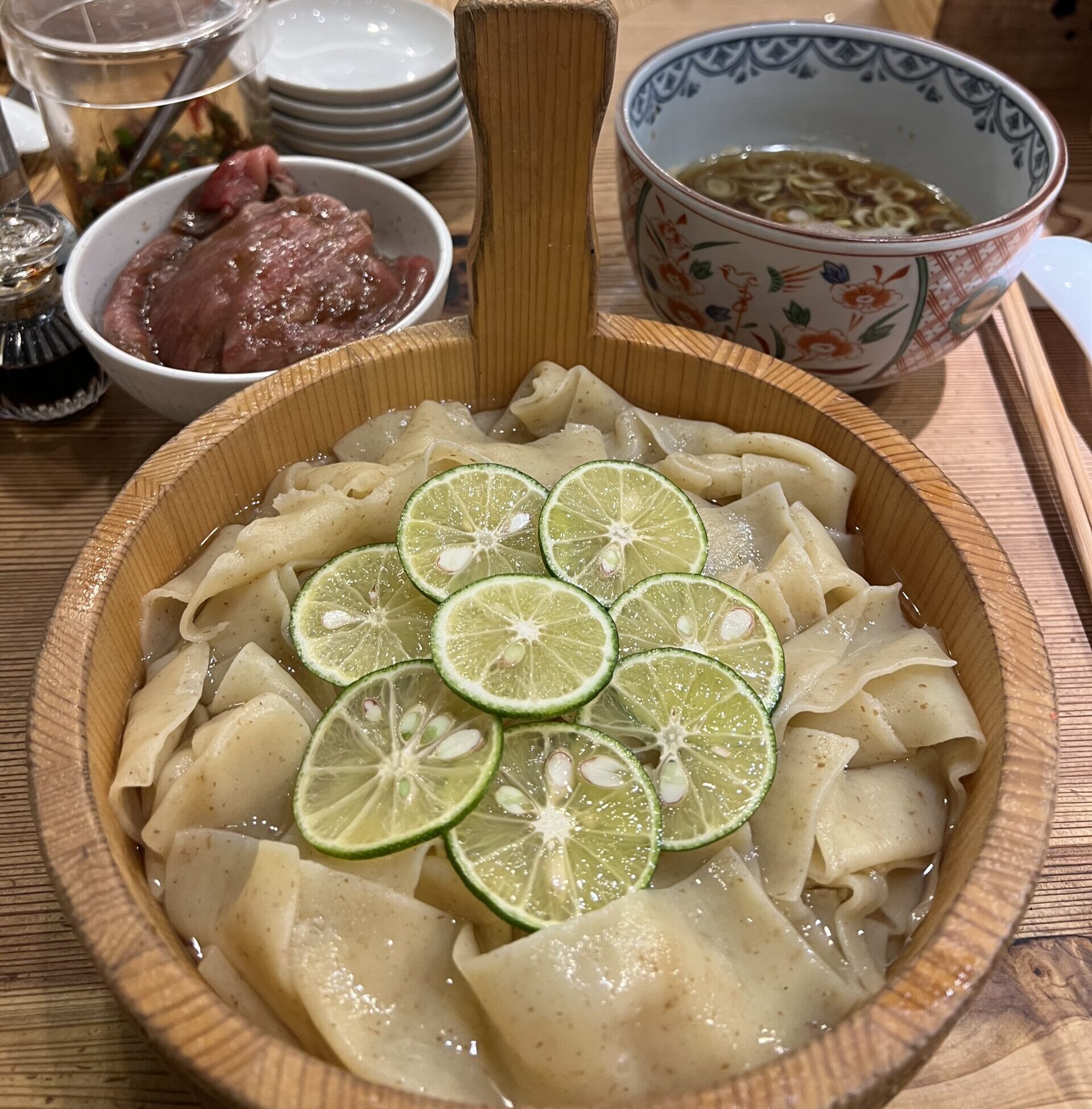
Given how sweltering the summers in Tokyo are, I was in search for a refreshing, chilled bowl of noodles to recover from the long days of walking. Plus, I also was in search of a dish that was seasonal, since I wanted to take advantage of being in Japan in July. That is how I ended up having seasonal sudachi tsukemen from Kaneda near Tokyo Station.
So we’re on the same page:
I asked a friend who spent summers in Japan on exchange programs what to eat and he recommended Kaneda as an option that’s not all over TikTok already. He also suggested to try their sudachi ramen if they had it (both in season, and not sold out for the day). Sudachi typically grows in late summer, but can be available as early as July due to being grown in greenhouses.
After managing to find Kaneda’s instagram with a post saying they had sudachi tsukemen as of 1 hour ago, I knew I had to try. Off we go!
I arrived at Tokyo station around dusk on a Wednesday. After navigating through the station and the underground food court of a mall, I arrived at a queue that was about 20 people long already.
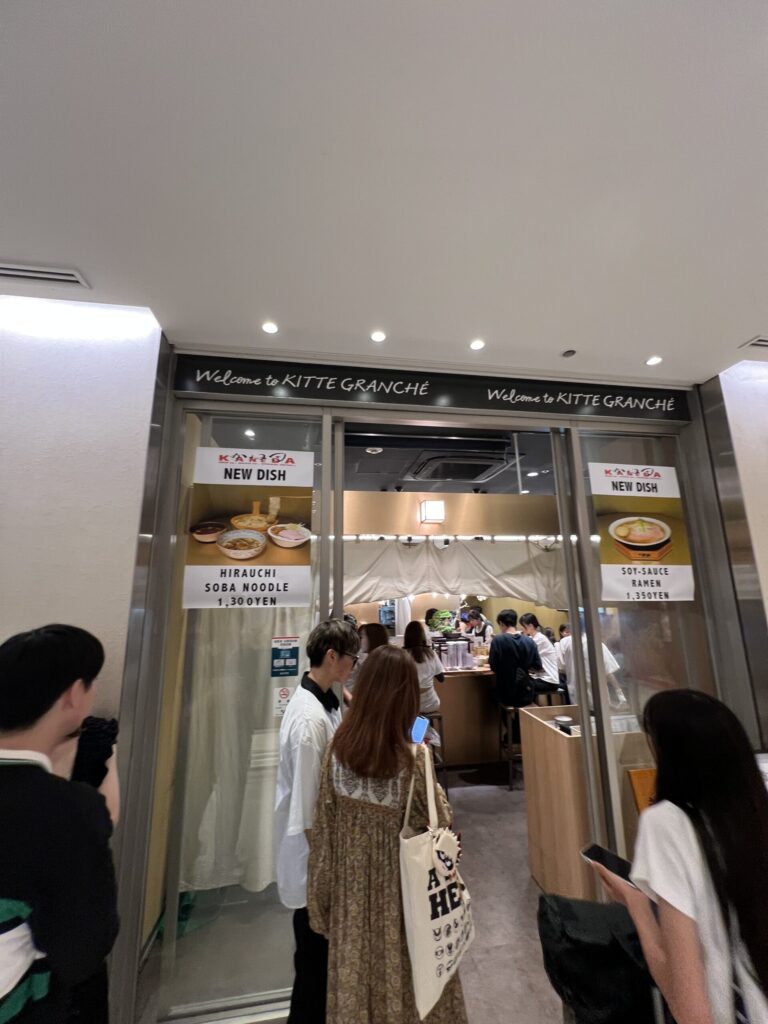
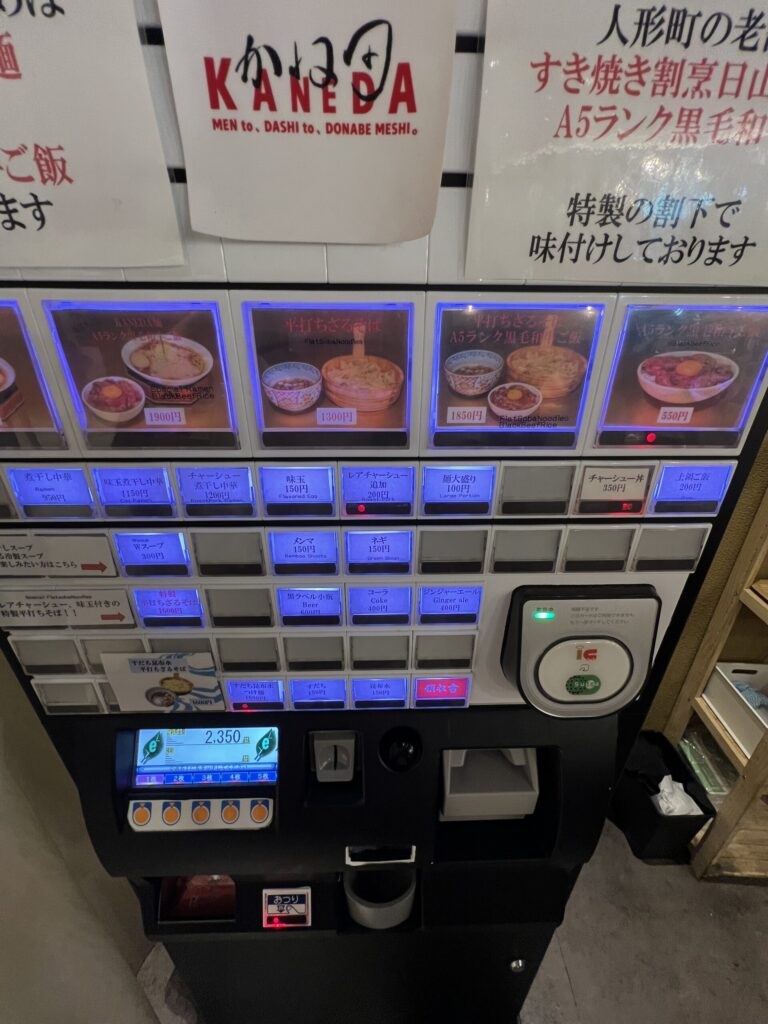
The line moved fast. And although that would normally be a good thing, only after 5 minutes I was gestured inside to start my order on the food ticket machine. Even though I heard from a friend to try the tsukemen at Kaneda, I was quickly overwhelmed at the options on the machine.
Luckily, the hostess was helping me, in half broken English and half broken Mandarin, pointing to this button that had a make-shift taped-on picture of tsukemen with little sudachi slices on top of it. Surely that must be it. My order: I ordered the Sudachi Tsukemen and a side of the Japanese black beef rice.
I hand the hostess my food tickets, enter back in line, and wait another 10 minutes. Before I knew it, it was time to sit at the bar. Literally within a minute, my food is brought to me.
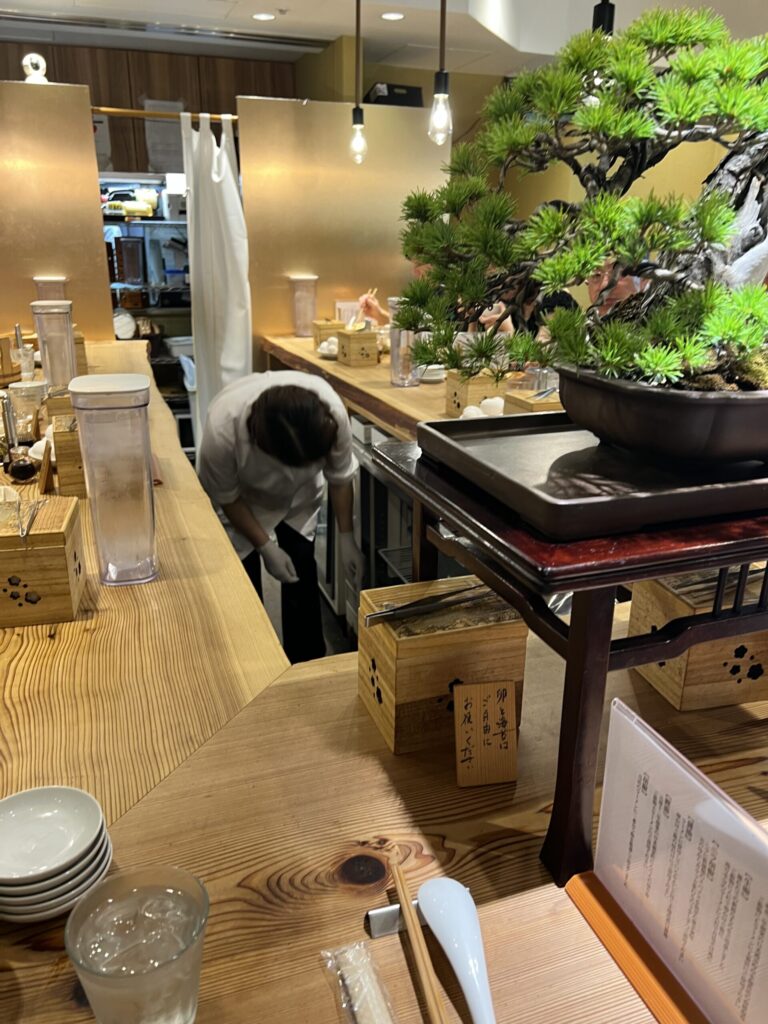

Looking at the presentation of my food alone made me have one of my first ‘wow I’m in Japan’ moments. Thus far in my trip I’ve been eating instagrammable ramens and wagyu cutlets in brand new, plain, and ceramic bowls. But with the noodles iin a slightly old and worn down wooden bowl of ice water and the broth in a small decorative bowl already made the dish feel humble, authentic, with nothing to prove to anyone.
Now for other observations. The noodles were cold, and by cold I mean the water the noodles were swimming in was practically ice water. Meanwhile, the broth was contrastingly hot, ever so slightly steaming in the corner of my eating area. Also, while I got whiffs of seafood-like soup from the broth, the aroma of citrus was really what stood out.
The noodles also were a standout visually. They were impressively thin and flat, yet unapologetically long (I guess chef didn’t want to cut them). The Italians would be proud. Color-wise they weren’t fully beige, they had specks of brown in them, which I assume means they are incorporating more of the bran into the dough.
My first bite: I take a singular noodle and dip it into the tsukemen and slurp up what feels like a 5 foot long noodle. I was instantly hit with a broth that was shamelessly fishy and salty. Quick aside, but from my research the broth is made from niboshi, which means dried sardines. From what I could gather, Kaneda uses different types of sardines to flavor their broth and give it its unique taste.
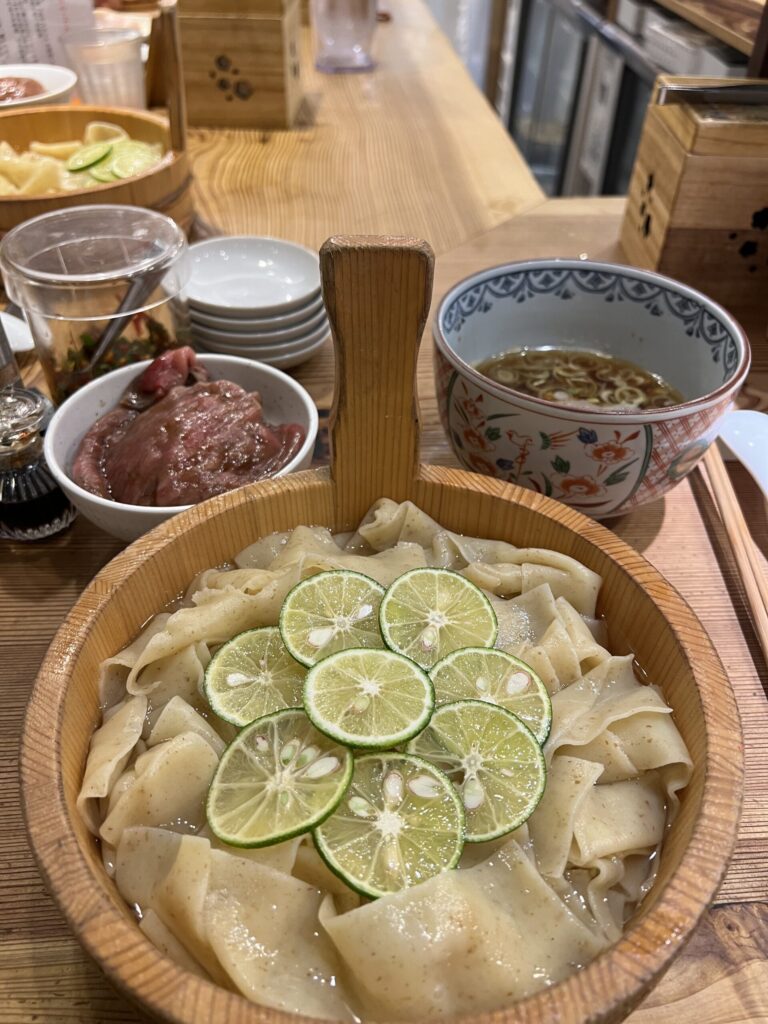
But the weird thing was as it sat in my mouth longer it became even more savory. I have in my notes almost like it was something in between a beef and chicken gravy. Doesn’t make sense to me as something that was flavored entirely with fish, but I mean the broth being gravy-like in the best way possible. Obviously, the notes of green onions and fish-flavored undertones made this completely unique from what’s at Thanksgiving dinner.
Another thing of note was the noodles. They were easily the most al dente and chewy noodles I’ve had the whole trip. Perhaps top 3 ever, it was up there for chewiness with biang biang noodles and knife cut noodles from China.
While I’m sure them being served cold with the bounciness of using whole wheat noodles helps, this seemed like an intentional choice for a dish where the noodles were clearly the star. I’ve had a few disappointing ramens earlier in this trip that practically overcooked in the piping hot bowl, but this was entirely different.
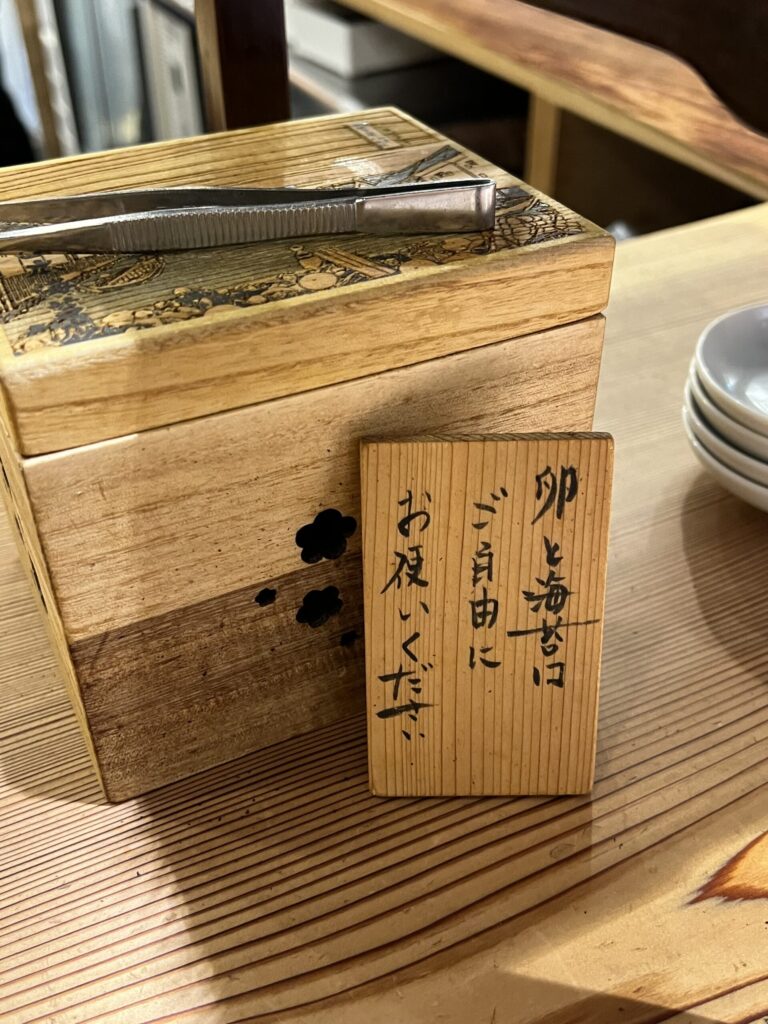
After a few moments of finishing my first bite, the bar attendant gestured to a box and smiled. I tried Google translating the sign, and deduced that it was seaweed and eggs (nearby) that seem to be unlimited to have with your broth and rice, respectively. Definitely a nice way to customize. I added some seaweed to some bites of my broth and it made it slightly fishier and salty, if you want that.
But wait, what about the sudachi? I thought the same thing. After all that’s why I was here. I don’t know if this was chef’s intent or not, but I stabbed the sudachi with my chopsticks and sort of shuffled it around the bowl to both squeeze and mix the citrus juice around. I then took another bite of just the noodles and had a new taste I haven’t had before.
I had to wait a few seconds to pinpoint the taste. Not quite lemon or lime. For my southeast Asian food lovers, it also was not quite calamansi. It definitely was more aggressive and zesty than other citrus I had. But perhaps the most intriguing thing was that it was almost peppery, which made the taste more complex than say, eating an orange. Definitely something I wouldn’t take a bite into on it’s own, but definitely something to add a sharp undertone to dipping with the ramen.
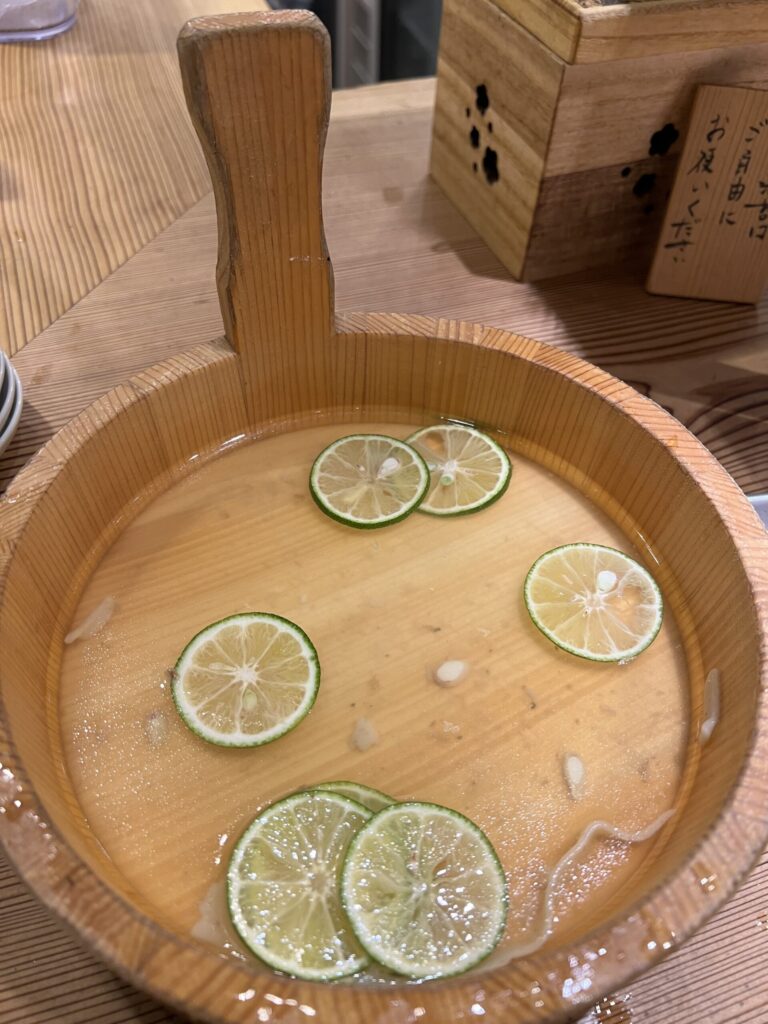
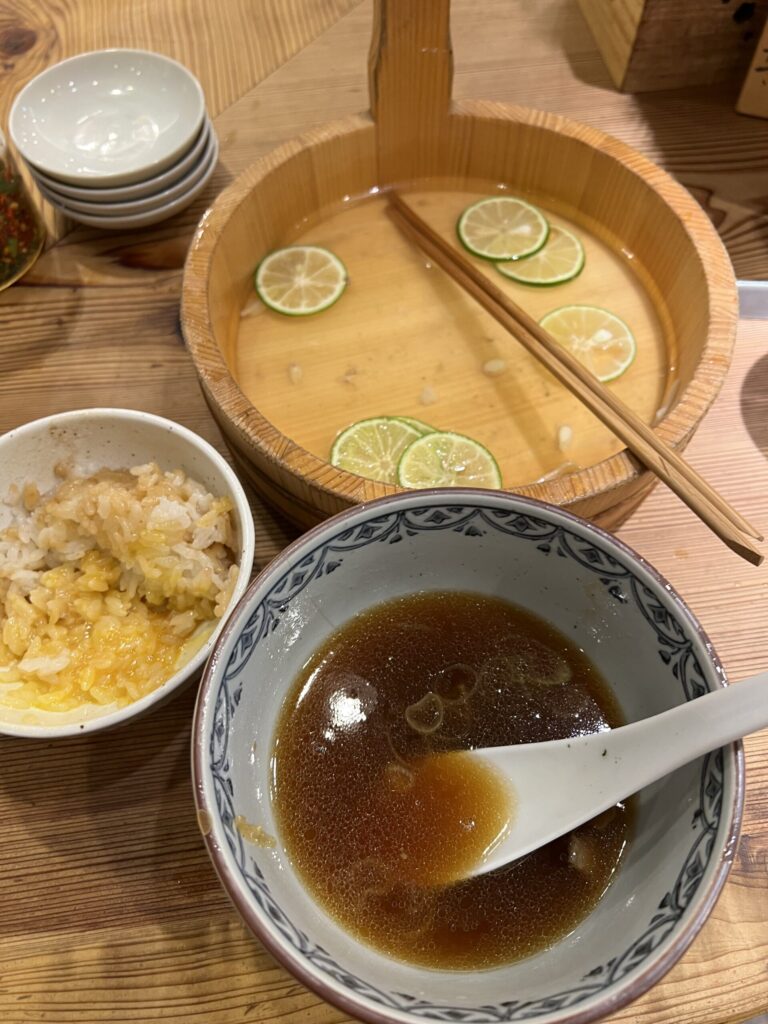
I went back in forth between noodles and broth, and kept upping the amount of sudachi I was squeezing into the bowl until nothing was left. Could you tell it was yummy?
I tried looking for sudachi around the rest of my trip to no avail, I mainly found lemon candies and yuzu beauty care.
I wish I could just have another glass of that leftover sudachi water I made myself. It was shamelessly acidic, aromatic, and peppery. When paired with a deeply salty, fish-rich broth and the chewiest noodles you’ll ever have, made this dish an unforgettable seasonal memory of my time in Tokyo.